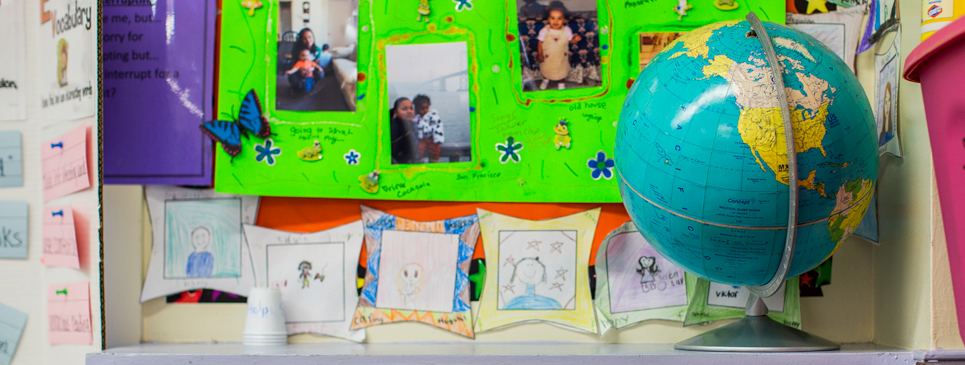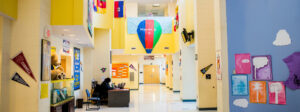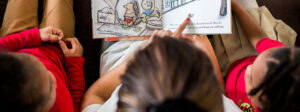A few months ago, while observing a classroom in Florida, I had the pleasure of meeting fourth grader Amelia (name changed). Like over 11,000 children in Florida schools, she had recently relocated from Puerto Rico after her community was devastated by Hurricanes Irma and Maria.
When I entered the classroom, the students were in the middle of transitioning to a paired activity, focused on answering text-dependent questions. After the class organized in pairs, I noticed Amelia was sitting alone, without a book. I wandered over to ask if I could be her partner for the activity and quickly learned she spoke Spanish and was learning English.
We began talking; I eagerly asked questions in Spanish and Amelia graciously shared her experience of the storms and her new life in Florida. I learned she was living with friends of her family, and spent many sleepless nights missing home, plagued by nightmares of Irma and Maria. When the conversation shifted to school, she told me she appreciated her teacher taking the time to get to know her and pronounce her name correctly, but recently, she was starting to think the teacher wasn’t interested in her anymore.
Amelia felt like she was either ten steps behind her classmates or separated from her peers entirely, with different assignments and lessons. She wanted so badly for her teacher to know she loved reading and always completed her homework early, and that back in Puerto Rico, she had lots of friends and was very involved in her community. And when I asked her what her first month at school was like, I discovered that no one had talked with Amelia or her care-takers about her goals and interests. I couldn’t help but wonder if she’d been placed in the appropriate class. What assumptions had the adults at the school made about her knowledge and abilities? Did they have lower expectations for her relative to her native English speaking peers?
I left Amelia’s classroom wishing I could spend the rest of the day with her and assure her that eventually she would feel included and better academically and emotionally supported. Unfortunately, I could not spend more time with her, and I could not make her any of those promises. I was angry, disappointed, and wished someone would listen to Amelia and embrace her story, abilities, and aspirations. I spent several days blaming our school system and pointing to the unfair English-only rules in Florida and inadequate supports for English language learners in curriculum and instruction. But looking back, when I was a teacher I made several of the same mistakes Amelia’s teacher did.
My family has called Florida home since my grandparents immigrated from Cuba in 1960. It’s also where I began my career in education, as a middle school teacher. My classroom was home to both native English speakers and English language learners, with my ELL students representing everywhere from Japan to Germany, and not just Latin America, as folks often assume. But even as a bilingual educator from a family of immigrants, I made a lot of assumptions in my effort to support my ELL students.
In hopes of building their confidence, I consistently provided them with below grade-level work, instead of the rich grade-level appropriate content crucial for language development and vocabulary acquisition. To make matters worse, in a misguided effort to help them feel safe, I grouped all my ELL students together, depriving them of meaningful interactions with their native English speaking peers; interactions that would have supported both linguistic and social growth. By segregating my class, I created an inequitable environment that devalued my students, their language, and their culture. This also robbed my native English speaking students of an incredible opportunity to learn and work with students whose language and culture was different from their own. I also never stopped to ask my students, or their families, what they wanted from me.
The frustration I felt after leaving Amelia’s classroom and reflecting on my own wouldn’t help her—or the thousands of students like her across the country. As an adult working within the system, what I can do to help is listen to students and work with other adults to change things.
While the majority of Puerto Ricans have relocated to Florida, many others have relocated to New York, Pennsylvania, Massachusetts, New Jersey, Texas, and Connecticut. As educators in Florida and across the country plan for the upcoming school year, please learn from Amelia—because we can’t afford for some of our most vulnerable students to miss any opportunity to learn.
Resources for Supporting Recently Displaced Students
Fortunately, there are a range of resources for those interested in better meeting the needs of students like Amelia. Here are a few to get you started:
How Families Can Cope with Relocation Stress After a Disaster
Unsure of what disaster-related stress looks like? The American Academy of Pediatrics shares a list of warning signs for different age groups, as well as step-by-step instructions to support children and families after a natural disaster.
Placing English Language Learners in a Program of Instruction
If a student is placed in the wrong grade-level class, it’s nearly impossible for them to receive an adequate education. In this road-map created by Colorin Colorado, learn how to place ELL students in an instructional program that meets their language and academic needs.
Interim Immunization Recommendations for Individuals Displaced by a Disaster
To do their best in school, kids shouldn’t be worried about getting sick. In service of that goal, the Centers for Disease Control and Prevention have provided a guide for making sure displaced children have the immunizations they need.
Helping Children Cope with Disaster
Designed for parents and caretakers, this American Red Cross and FEMA booklet shares suggestions on how to help children cope with the effects of a disaster, as well as how to be prepared before a disaster strikes.
Getting Ready for College: What ELL Students Need to Know
Just because a child was recently displaced, that doesn’t mean they should be forced to abandon their dreams. This two-part series shares advice and resources to support ELL students on their journey to college.





